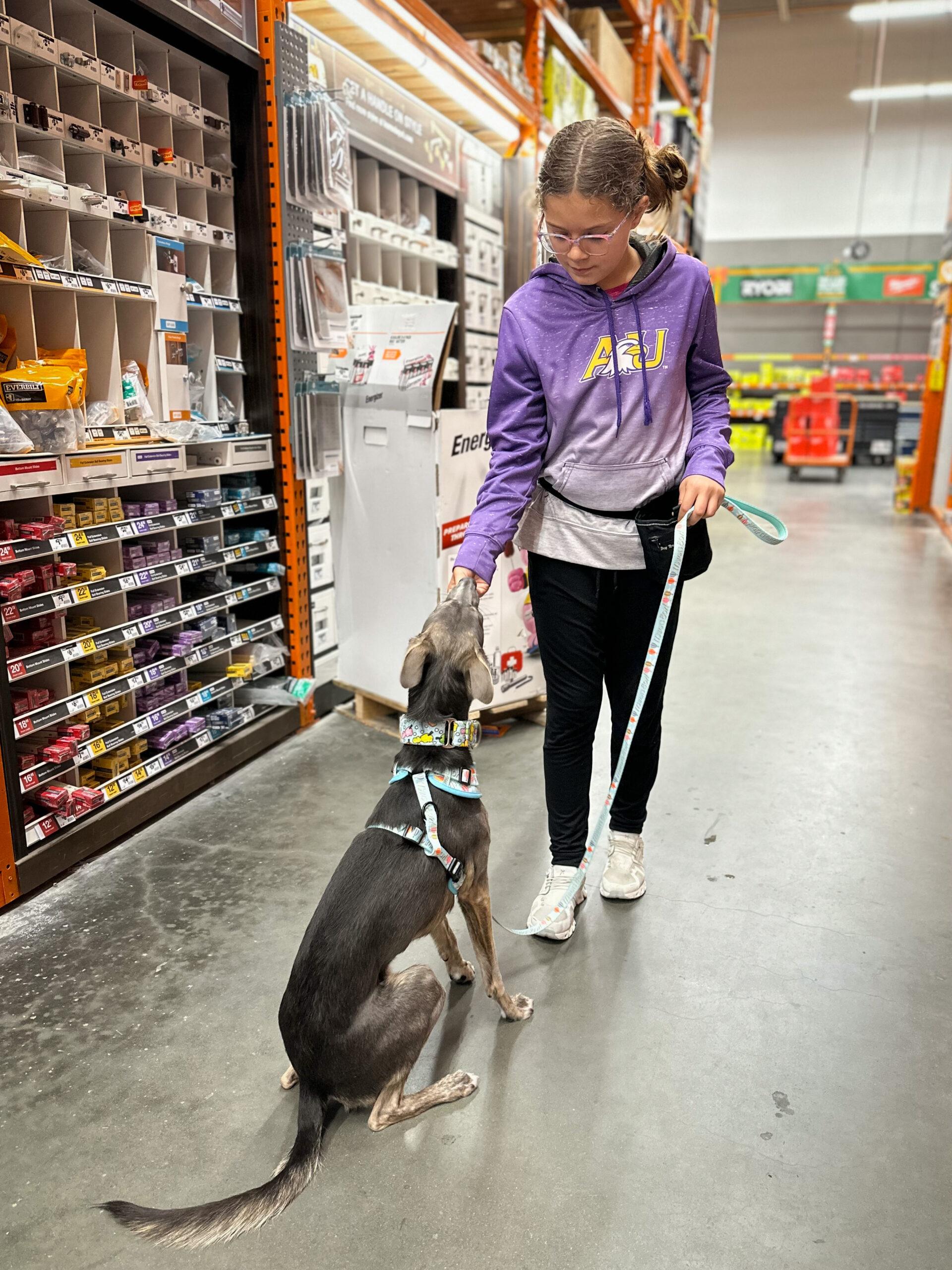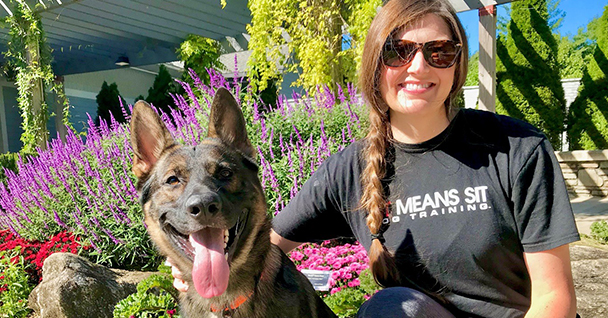Common Behavioral Issues and Their Solutions in Dog Training
Common Behavioral Issues and Their Solutions in Dog Training
Blog Article
Essential Tips for Effective Dog Training: A Guide for Family Pet Owners
Effective pet dog training is a diverse process that requires a critical strategy tailored to both the pet's personality and the owner's goals. Comprehending just how to browse these challenges can dramatically boost the training experience, eventually transforming the connection in between owner and pet.
Comprehending Dog Habits
Understanding pet dog actions is important for efficient training and cultivating a harmonious relationship between pooches and their proprietors. Dogs communicate mostly through body movement, vocalizations, and activities, making it vital for proprietors to translate these signals properly. Identifying a dog's stance, tail placement, and ear positioning can give understandings into its mood. A wagging tail does not constantly indicate happiness; it can also signify excitement or anxiety.

Socialization plays a significant function in canine behavior; exposure to various atmospheres, individuals, and other animals can dramatically impact a pet's temperament. Variables such as breed features and individual temperament must assist training approaches, as some types may have certain behavior attributes that require tailored approaches. By comprehending these aspects, owners can produce a helpful environment that urges favorable habits, bring about effective training results and a deeper bond with their animals.
Developing Constant Commands
Effective communication with your canine starts with developing constant commands. This foundational component of training is crucial for promoting understanding between you and your pet. Consistency in the commands you utilize makes certain that your pet can accurately connect specific words or phrases with the wanted behaviors.
When picking commands, select clear, distinctive words that are very easy to set apart and state from each other. Prevent using similar-sounding commands that might confuse your dog. For instance, using "sit" and "stay" is suitable, however "sit" and "struck" might result in misunderstandings.
Furthermore, maintain the exact same tone and quantity for each and every command. Canines are sensitive to singing hints, so differing your tone can create confusion.
It is equally crucial to make sure that all member of the family are on the exact same web page relating to the commands made use of. A united front in command use will avoid combined signals and enhance the learning process.
Positive Support Strategies
The power of favorable reinforcement in pet dog training exists in its ability to urge desired actions through rewards and praise. This technique is based in the principle that habits complied with by desirable outcomes are more probable to be duplicated. By integrating favorable support right into your training regimen, you can efficiently form your pet's actions in a constructive fashion.
To carry out favorable reinforcement, it's vital to determine what inspires your dog, whether it be deals with, playthings, or spoken appreciation. When your pet dog does a preferred action, such as resting on command, instantly award them with a reward or affection. This association in between the command and the favorable end result enhances their understanding.
It's important to timing the benefits properly; supplying the reinforcement within seconds of the desired actions assists your pet make the link (dog training). Furthermore, uniformity is essential-- ensure that all member of the family utilize the same commands and incentive systems to prevent complication

Progressively, you can decrease the frequency of deals with as your pet dog learns the actions, transitioning to applaud or periodic benefits. This technique not only fosters a strong bond in between you and Visit Your URL your pet yet likewise promotes a positive understanding environment, making training a delightful experience for both.
Socialization and Interaction
Constantly exposing your pet to a selection of settings, people, and other animals is crucial for their social growth. Socialization should begin early, ideally throughout the crucial window of 3 to 14 weeks, when puppies are most responsive to brand-new experiences. Older pet dogs can additionally benefit from continuous socialization initiatives.
Present your pet to different settings, such as parks, pet-friendly stores, and urban areas. This direct exposure aids them adjust to numerous stimuli, reducing anxiety and fear feedbacks. Encourage favorable communications with various other pets and individuals, making sure that these experiences are regulated and safe to cultivate self-confidence.
Make use of structured playdates with courteous canines, as this can improve your canine's social skills and instruct them suitable actions. Obedience classes and training sessions likewise supply outstanding chances for socialization, allowing your canine to connect with others in a monitored environment.
Monitor your canine's body language during communications, as this will certainly aid you assess their convenience level. Slowly boost direct exposure to even more challenging situations while ensuring that each experience is positive. A well-socialized dog is more probable to display balanced habits, making them a joy to have in any type of setting.
Attending To Usual Training Obstacles
Every pet proprietor will encounter training obstacles at some time, despite their dog's age or socializing degree. Recognizing typical problems such as stubbornness, disturbances, and terror can help in establishing efficient methods for renovation.

Distractions during training sessions can thwart focus. To battle this, begin training in a silent environment with minimal stimulations. Gradually present diversions as the pet comes to be extra efficient in commands. Short, regular training sessions are likewise efficient in maintaining focus.
Fearfulness can impede a dog's understanding process. Gradual desensitization to the source of fear, coupled with favorable reinforcement, can assist reduce anxiousness. Patience is essential; never compel a canine right into a circumstance that creates distress, as this might exacerbate the concern.
Eventually, understanding and dealing with these typical challenges with an organized strategy will cultivate a much more productive training experience, enhancing the bond between pet visit our website dog and owner while promoting efficient understanding.
Final Thought
In recap, effective canine training relies upon a detailed understanding of canine actions, the facility of consistent commands, and the application of positive support methods. Socialization plays a crucial duty in developing well-adjusted family pets, while resolving usual training obstacles calls for perseverance and adaptability. By implementing these vital methods, pet dog owners can promote a strong bond with their canines and advertise desirable habits, inevitably leading to a harmonious partnership in between human beings and their canine check out here buddies.
Recognizing dog actions is crucial for reliable training and promoting an unified partnership between pooches and their owners.Socializing plays a considerable duty in pet habits; direct exposure to numerous atmospheres, people, and other pets can dramatically impact a canine's personality.The power of favorable support in pet dog training exists in its ability to motivate wanted behaviors through benefits and praise. By incorporating positive reinforcement right into your training regimen, you can effectively form your dog's behavior in a useful way.
In summary, effective pet training relies on a thorough understanding of canine habits, the facility of constant commands, and the application of positive support techniques.
Report this page